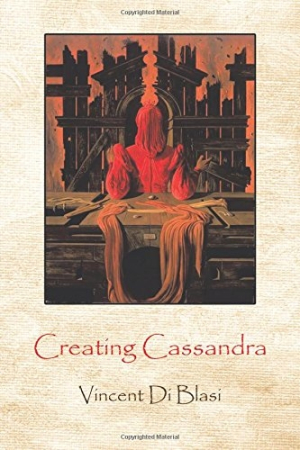Creating Cassandra
Salacious undertones permeate this mafia love story in which two people live out their story again and again across different times and continents.
Vincent Di Blasi’s Creating Cassandra is a tumultuous tale in which friendship is questioned, wealth and power are sought after, and love is tested. This mob romance incorporates a literary approach for a love story that is anything but ordinary.
Joseph Giangreco, a publishing executive who moonlights as a gangster, is fearless when it comes to going after what he wants. He sets his sights on Cassandra, an impeccably beautiful and ambitious consultant. Instead of pursuing her in a conventional manner, he convinces her to be the muse for his novel.
Inspired by the ideals of courtly love and the troubadours, Joseph sets his and Cassandra’s love story in another era, far removed from their lives in Boston. As his novel gets underway, real-life drama unfolds. It becomes hard to decipher if Giangreco is predicting his and Cassandra’s future together or if they have begun living out the fantasy of the characters in his book.
Across the novel’s three parts, the setting shifts between 1990s Boston and Mexico and the twelfth-century Mediterranean backdrop of Joseph’s novel. These transports happen organically. The two story lines parallel one another in ways that are profound and believable. Both worlds are equally compelling, though a misleading introduction creates a convoluted picture of what’s to come.
The eloquently constructed prose alludes to criminal activity, but the text focuses more on in-depth character studies. Joseph does dangerous favors for a rich and powerful friend, Sam Corso, but the extent of these errands is left vague, setting the stage for several unexpected reveals. Manipulation is a strong theme as multiple versions of the truth surface.
Dialogue is fresh and full of clever innuendos. Characters often speak in metaphor, such as when Sam likens his experience with Cassandra to being subjected to a foreign film—he always felt like he missed something that was never there to miss and that was not worth the hype.
Characters are ably captured through their physical attributes. Cassandra’s catlike walk complements her underlying sinister side. Sam’s unattractiveness doesn’t keep him from commanding attention when he walks in a room. Each character has their own agenda that evolves across the novel.
Throughout the narrative, archetypal romanticism is a constant endeavor. Characters commit atrocious acts and are met with kindness and understanding as they prove their devotion to one another. As the story progresses, characters elicit shocking and emotional responses. The ending sheds light on personality flaws and malevolent schemes.
In Creating Cassandra, two people live out their love story again and again across different times and continents. Salacious undertones permeate this mafia love story.
Reviewed by
Brittney Decker
Disclosure: This article is not an endorsement, but a review. The publisher of this book provided free copies of the book and paid a small fee to have their book reviewed by a professional reviewer. Foreword Reviews and Clarion Reviews make no guarantee that the publisher will receive a positive review. Foreword Magazine, Inc. is disclosing this in accordance with the Federal Trade Commission’s 16 CFR, Part 255.

